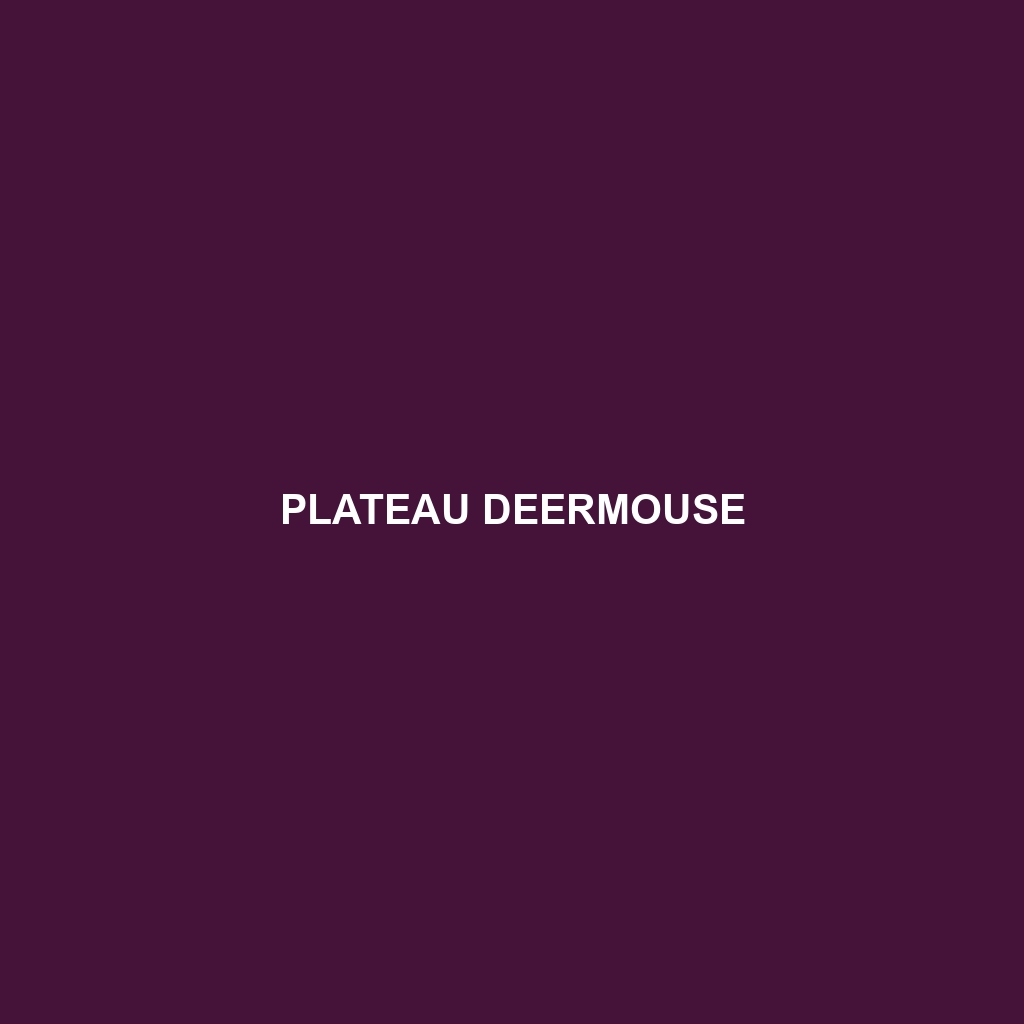Plateau Deermouse
Common Name: Plateau Deermouse
Scientific Name: Peromyscus maniculatus
Habitat
The Plateau Deermouse is primarily found in the mountainous regions of the western United States and parts of Canada. These small rodents inhabit dense forest areas, grasslands, and shrublands, showing a preference for environments that provide adequate cover and nesting materials. Their geographic distribution often includes elevations ranging from 1,500 to 3,000 meters where the climate is typically arid to semi-arid, featuring cold winters and mild summers.
Physical Characteristics
The Plateau Deermouse measures about 14 to 20 centimeters in length, including the tail, which can be as long as their body. Their fur is generally soft and thick, displaying a coloration that ranges from grayish-brown to reddish-brown on the dorsal side, with a lighter, white underbelly. Distinctive features include large eyes and rounded ears, which contribute to their acute sense of hearing and sight, essential for their survival in the wild.
Behavior
Plateau Deermice are primarily nocturnal, exhibiting a range of behaviors that include foraging, climbing, and burrowing. They are known for their agility and quick movements, typically found scampering through underbrush in search of food. Socially, they can be somewhat solitary but may engage in group behaviors during mating seasons or in abundance of resources. Their ability to establish intricate nest systems contributes to their adaptability in various environments.
Diet
The diet of the Plateau Deermouse consists mostly of seeds, nuts, fruits, and vegetation. They are omnivorous and exhibit opportunistic feeding, allowing them to consume insects and small invertebrates when necessary. This adaptability in feeding habits ensures their survival in diverse habitats, making them essential for seed dispersal and pest control.
Reproduction
Reproductive habits of the Plateau Deermouse vary with the seasons, typically peaking in spring and summer. Females can give birth to multiple litters each year, with an average of three to six offspring per litter. After a gestation period of about 24 to 28 days, the young are born hairless and blind, relying entirely on maternal care for their initial survival. As they grow, offspring learn essential survival skills from their mothers, preparing them for independence within a few weeks.
Conservation Status
Currently, the Plateau Deermouse is classified as “Least Concern” by the IUCN Red List. Despite facing habitat loss and environmental changes, their adaptable nature allows for stable population levels in suitable areas. However, continued conservation efforts are essential to monitor their habitats and ensure their longevity in the wild.
Interesting Facts
One fascinating aspect of the Plateau Deermouse is its remarkable ability to thrive in a variety of climates, making it one of the most resilient species of rodents. Additionally, they have been observed utilizing different nesting materials, including leaves, grasses, and animal fur, showcasing their resourcefulness.
Role in Ecosystem
The Plateau Deermouse plays a vital role in its ecosystem as a seed disperser, contributing to plant propagation. Their feeding habits support plant life, and their existence helps regulate insect populations, thus promoting a balanced food web. As prey for various predators, including owls and snakes, they serve as an essential link in the ecological chain.
